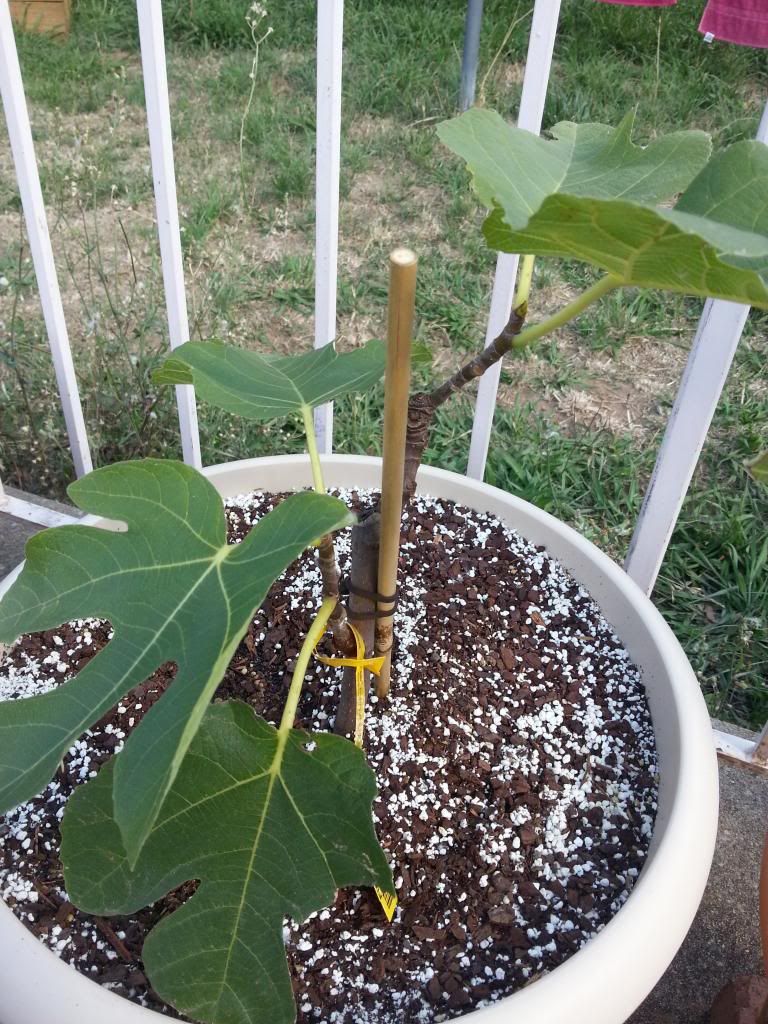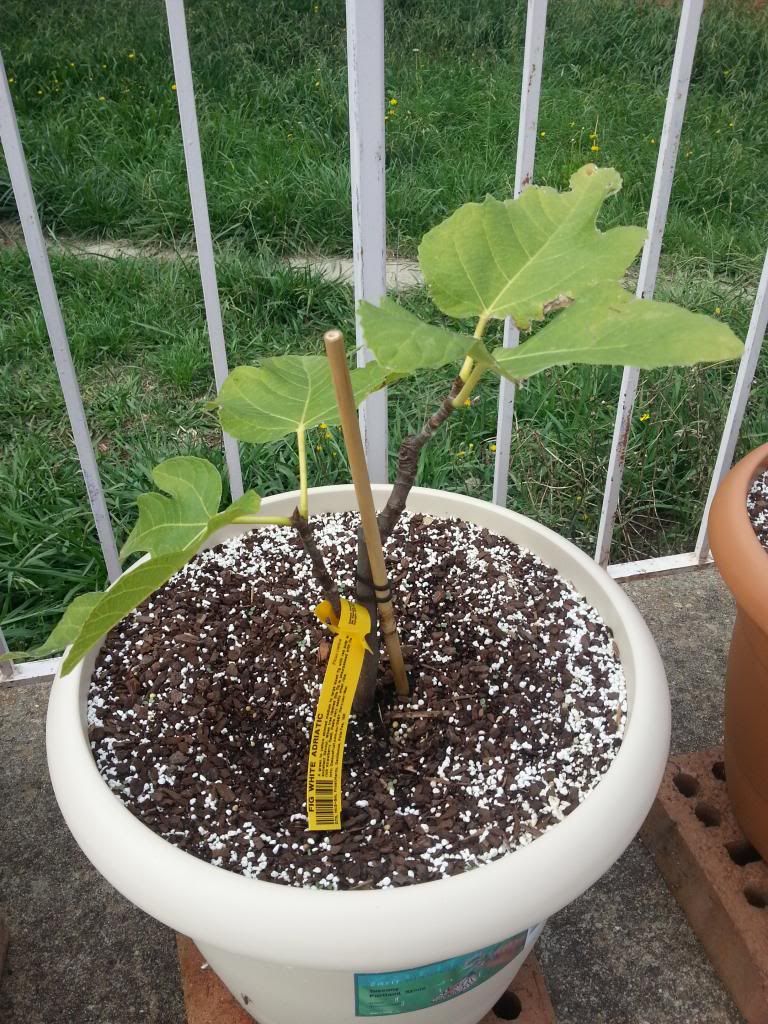I have been planning to update each of my figs for a long time now, especially as I am beginning to see fruit off of many of my trees. Today I will start with one of my favourites; White Adriatic.
Summary
Description; A vigorous plant that produced a number of breba and main crop figs. Performed poorly in 5-1-1 and enjoyed coconut husk chips in a larger pot.
Breba Crop? Yes
Breba taste? Sweet honey-nut
Breba appearance? Mottled, areas of deep red to light pink to pale pink
Main crop taste? Rich, sweet, berry
Main crop appearance? Uniform deep dark red
Problems? Rust
The Plant
I purchased my White Adriatic from Daley's Online Nursery in January 2013, it came nicely boxed, and I can still remember that of the three fig trees I bought when I opened the White Adriatic box I was greeted with a wonderful figgy aroma of the leaves.
In March 2013, my plant looked like this, about a week after transplanting;
 |
| 5th Feb 2013 White Adriatic |
I originally potted my White Adriatic into 5-1-1 potting mix, and had great expectation for growth. Sadly, however, this was not to be, and 28 days later my plant had gone backwards slightly, losing some leaves and colour.
 |
| 3rd March 2013 White Adriatic |
By April that year it had begun to put out a small amount of new growth, but lost it all shortly thereafter with the first frost.
 |
| 5th April 2013 White Adriatic |
I suspected that the soil mix I had used was the cause of my lackluster growth, and took the opportunity to repot the plant into a larger pot, with a mix made primarily of coconut husk chips.
 |
| 28 July 2013 White Adriatic in a new soil mix and larger pot |
Shortly after repotting, the plant took off. Buds broke about 2 weeks later, one of the earliest figs in my collection to break.
 |
| 15th September 2013 - White Adriatic bud break |
After this, growth took off in my new container mix, and just 8 days later my White Adriatic already had more leaves than in the months preceding dormancy!
 |
| 23rd September 2013 White Adriatic |
Another two weeks, and growth was speeding along! In less than a month from breaking dormancy this plant had put off more growth in its new container mix than the 3 months prior to dormancy! I was amazed.
 |
| 9th October 2013 White Adriatic |
By December White Adriatic was producing its first figs.
 |
| 12 December 2013 White Adriatic |
Today, about a month before dormancy, my White Adriatic barely resembles the plant I purchased a year ago.
 |
| 18 March 2014 White Adriatic |
The Fruit
My White Adriatic ripened its first two fruits at the end of January, these were breba figs.
 |
| 31 January 2014 - First ripened fruit |
The first fruits were small to medium in size, with a varied interior ranging from dark red to light pink.
 |
| 1 February 2014 - White Adriatic breba crop fruit |
 |
| 1 February 2014 - White Adriatic breba crop interior |
The flavour was sweet, honey like and tasty.
Later in the season my White Adriatic ripened some of its main crop, which had different colour and texture to the breba;
 |
| 20th March 2014 - White Adriatic main crop |
 |
| 20th March 2014 - White Adriatic main crop interior |
The main crop was much juicier than the breba with a uniform deep red colour. Its flavour was rich, sweet and berry-like. Far superior to the breba.
My White Adriatic still has a number of unripe fruit on its branches, however as the season draws to a close for the year I don't believe too many more will ripen, the plant is still young however,and I expect a much larger crop next year!
Problems
My White Adriatic has been moderately affected by rust in the last few weeks, likely a result of a larger amount of rain in the previous weeks. Rust begins as brown spots on the undersides of leaves, and can cause defoliation. Once rust appears it is difficult to deal with. Rust is fungus that spreads its spores from leaf to leaf through water droplets and can be treated in dormant phase with a copper based fungicide. All dropped leaves from rust infected plants should be destroyed.
 |
| Rust on White Adriatic |





























































